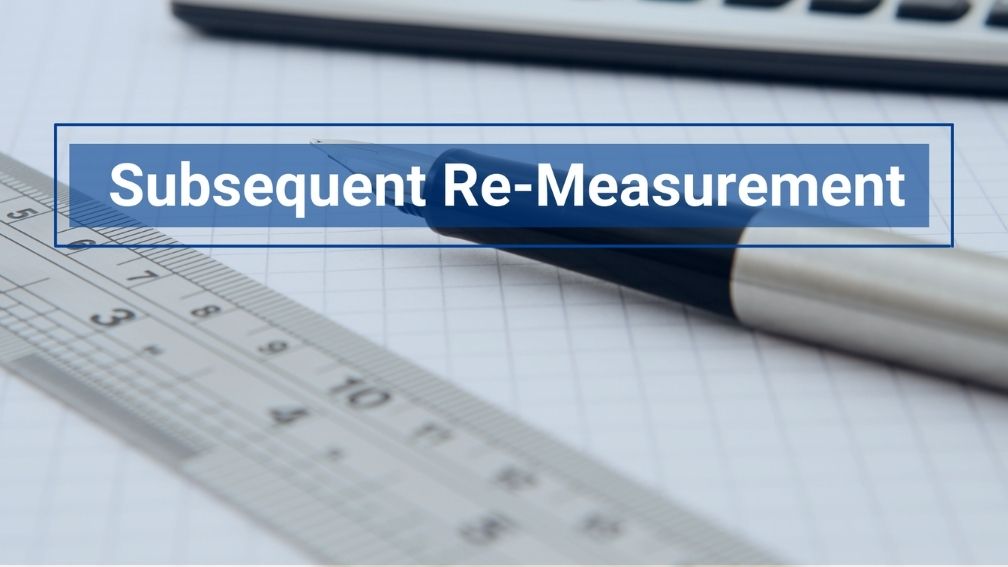Subsequent Re-Measurement of Leases Under ASC 842 Guidelines
Last Updated on August 30, 2022 by
Within any given lease portfolio, numerous contractual changes may occur depending on if your business is growing, downsizing or restrategizing your real estate. Some common lease amendments are payment adjustments with CPI, extension of the lease term, exercising your right to expand, amongst many others. All of these will result in a subsequent re-measurement of the amended lease.
If you just signed a new lease then check out our 5 Steps to Complete an Initial Lease Measurement at the lease commencement date.
Under the ASC 842 guidelines, subsequent measurement and re-measurement of a lease is well outlined by FASB. Leases are relatively fluid documents, so in this post, we will discuss how to account for subsequent re-measurement of your leases.
Lease Modifications Explained
A lease modification is a change to the terms and conditions of a contract that results in a change in the scope of or the consideration for a lease. The following are examples of lease terms which may be amended after the lease commencement date:
- A lease extension
- Early termination of the lease
- A change in the timing of lease payments
- Leasing additional space in the same building
To explore this topic more in depth, check out our post on How to Account for Lease Modifications Under ASC 842.
If a lease is modified and the modification does not result in a separate contract then the lessee will need to subsequently re-measure the lease that was amended. Follow the processes outlined below to subsequently re-measure an operating or finance lease.
How to Subsequently (Re) Measure Operating Leases
For operating leases, a lease expense is recorded in a single financial statement line item on a straight-line basis over the lease term. This differs from a finance lease that includes both amortization and interest expense.
Straight-Line Expense: Periodic straight-line expense at the lease commencement date is based on the sum of the total lease payments, the initial direct costs and the lease incentives divided by the periodic lease term.

A lessee records the straight-line expense on the income statement. The income statement will also include any variable lease payments not included in the lease liability and any impairments recorded in the period.
ROU Asset Reduction
The ROU Asset is reduced periodically by computing the difference between the straight-line expense and the accretion of interest on the lease liability each period. Although the period interest expense is not recorded, it is calculated in order to accrete the lease liability and reduce the ROU asset, as show below

Lease Liability
Lease liabilities are measured the same way regardless of lease classification. In each period, the liability will reflect an increase due to period interest expense which is offset by a period lease payment, as shown below:

How to Subsequently (Re) Measure Finance Leases
For finance leases, ROU Asset Amortization and Interest Expense are recorded separately on the income statement. Finance leases will generally have a front-loaded expense recognition.
ROU Asset Amortization
A lessee shall amortize the ROU asset on a straight-line basis, unless another systematic basis is more representative of the pattern in which the lessee expects to consume the right-of-use asset’s future economic benefits.
The ROU asset shall be amortized from the lease commencement date to the earlier of the end of the useful life of the ROU asset or the end of the lease term. However, if the lease transfers ownership of the underlying asset to the lessee or the lessee is reasonably certain to exercise an option to purchase the underlying asset, then the lessee shall amortize the ROU asset to the end of the useful life of the underlying asset.
Interest Expense
Period Interest Expense is calculated as follows:

Lease Liability
Lease liabilities are measured the same way regardless of lease classification. In each period, the liability will reflect an increase due to period interest expense which is offset by a period lease payment, as shown below:

Lease Measurement Types
The visual below provides an overview of the circumstances that could lead to a lease re-measurement and the required actions:

There are numerous scenarios in which a lease modification can and will lead to a subsequent re-measurement of your lease. To get started with ASC 842, read more on our blog, The Ultimate Guide to Navigating the Lease Accounting Lifecycle. Whether you have a portfolio of ten leases or thousands of leases, Occupier is here to help your teams manage and collaborate on the entire lease lifecycle from signing new leases, to lease administration and lease accounting. Request a demo to see how Occupier lease software can assist your teams.
Accounting Guidance Referenced:
- ASC 842-20-25-5
- ASC 842-20-35-1
- ASC 842-20-35-7
- ASC 842-35-8
- Deloitte A Roadmap to Applying the New Leasing Standard (2020) 8.4.3.1
- PwC Leases October 2020 4.4.
Check out our Lease Accounting Compliance Hub for all things ASC 842.
